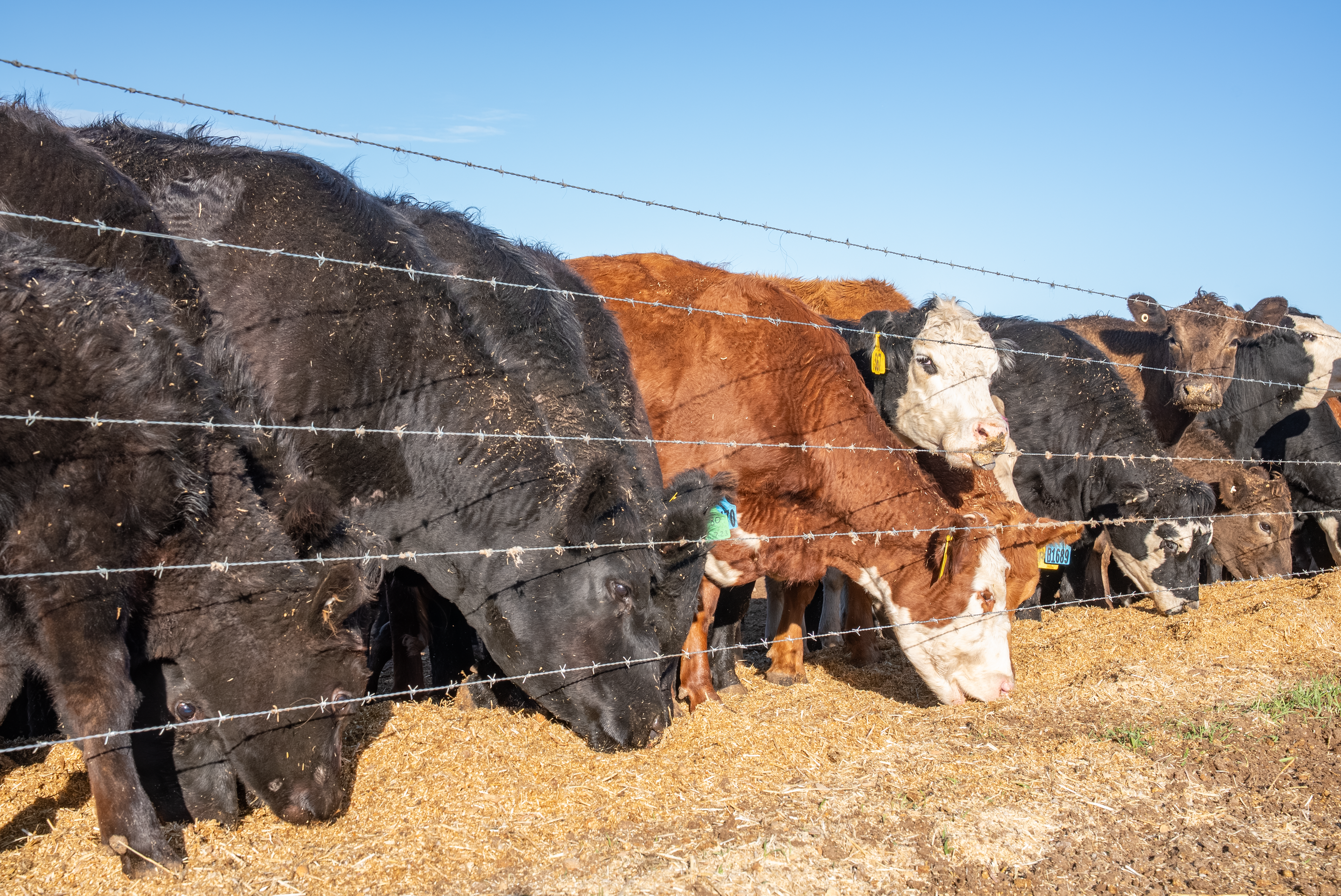The Stud Stock Selection Secrets: 5 Traits Every Breeder Overlooks


Choosing the right stud stock can increase your herd's profitability by over 20% in just a few generations, but many breeders are leaving money on the table by focusing only on what they can see.
Whilst conformation remains a foundational element in livestock assessment, the most significant genetic gains emerge from traits that remain invisible to the naked eye. Characteristics also manifest in behaviour, metabolic efficiency, and long-term resilience rather than immediate physical appearance. Modern animal breeding has evolved far beyond the paddock eye test, yet countless livestock producers continue to rely primarily on visual assessment when making breeding choices that will impact their operations for decades to come.
The five frequently overlooked but critical traits explored here define elite breeding animals and drive long-term success in contemporary agriculture. Forward-thinking producers who understand these key components of a successful animal breeding program position themselves to build resilient, profitable operations that thrive in challenging market conditions and changing environmental landscapes.
Beyond the Eye Test: Modern Tools for Genetic Selection
Moving beyond visual assessment requires objective data that quantifies the invisible genetic potential within each animal, transforming breeding from art to science through measurable metrics.
Estimated Breeding Values (EBVs) and Australian Sheep Breeding Values (ASBVs) have become industry standards. They provide predictions of an animal's genetic merit for various traits based on performance data from the animal itself, its relatives, and progeny across multiple environments and management systems. The revolution of genomics through Genomic Breeding Values (GBVs) has fundamentally changed how we evaluate stud stock. DNA testing provides remarkably accurate pictures of genetic potential, particularly valuable for young animals without extensive performance records or proven progeny.
Practical applications like Angus HeiferSELECT for cattle or LAMBPLAN for sheep make these concepts tangible for producers. Platforms like Farmbuy increasingly feature animals with comprehensive genetic data to support informed purchasing decisions. These methods for genetic selection in animal breeding don't replace, but complement traditional stockmanship. They serve to enhance experienced judgment with powerful data that reveals how to identify desirable genetic traits in cattle, sheep, and other livestock with unprecedented accuracy and confidence.
Secret 1: Temperament and Docility


Temperament often receives minimal attention during selection despite profoundly impacting safety, management efficiency, and product quality. This behavioural trait influences nearly every aspect of livestock production from daily handling to final carcass value.
Poor temperament translates directly into increased labour costs through extended handling times, elevated risk of injury to both handlers and other animals, and even significantly reduced weight gains. This is because chronic stress responses divert energy from growth toward survival mechanisms, creating a cascade of productivity losses throughout the production cycle.
High-stress animals consistently produce inferior meat quality, manifesting as dark cutting in beef or pale, soft, exudative meat in pork. Stress can only result in direct economic losses at processing, yet many producers fail to connect this to their initial breeding decisions.
Selecting for superior temperament using tools like Docility EBVs combined with practical yard scoring creates compounding benefits across generations. Calm animals not only perform better themselves but pass these behavioural traits to progeny, establishing safer working environments and more efficient production systems.
When prioritising health in animal breeding programs, temperament emerges as one of the most underestimated genetic traits breeding animals possess. It fundamentally affects welfare, productivity, and profitability throughout the entire operation.
Secret 2: Longevity and Structural Soundness
Longevity encompasses far more than simple chronological age, representing an animal's entire productive life within the herd or flock. It proves to be a complex trait that dramatically impacts profitability through reduced replacement costs, increased lifetime output, and improved genetic progress through extended breeding careers.
The economic burden of high turnover rates due to structural breakdown in feet, legs, udders, or reproductive systems often remains hidden until producers calculate the true cost of premature culling. Included are lost production potential, replacement animal expenses, and genetic progress sacrificed when superior animals leave the breeding programme prematurely.
Assessing structural soundness requires evaluating functional traits that support extended productive life beyond basic conformation checks. Make sure to examine foot angle, pastern strength, udder attachment, spine alignment, and joint flexibility under working conditions, instead of static show ring poses.
Relevant EBVs such as 'Stayability' in beef cattle or 'Lifetime Ewe' values in sheep provide objective measures of these qualities. Platforms like Farmbuy increasingly highlight longevity metrics to help buyers identify qualities defining superior breeding stock with proven staying power.
Understanding subtle genetic traits affecting progeny survival rates enables producers to build herds that maintain peak productivity well into maturity. This ensures maximal return on investment in quality genetics, while reducing replacement animals and keeping efficient resource utilisation.
Secret 3: Feed Efficiency


Feed represents the single largest variable cost in most livestock operations. In spite of this, feed efficiency (the ability to convert feed into saleable product whether meat, milk, or wool) remains invisible to visual assessment and consequently overlooked in many breeding programmes despite its profound economic impact.
This critical profit trait directly influences cost of production through mechanisms that are only now being fully understood. We can now be aided by concepts like Net Feed Intake (NFI), which reveals significant genetic variation in how efficiently animals utilise nutrients, even when adjusted for body weight, growth rate, and production levels. Modern genetic selection increasingly incorporates feed efficiency metrics, recognising that animals requiring 10-15% less feed to achieve identical production levels offer substantial economic advantages that compound across generations, entire herds, and changing feed price scenarios.
Incorporating feed efficiency in genetic selection programs through tools available on Farmbuy represents sophisticated breeding that acknowledges hidden economic considerations in animal breeding decisions. Taking into account this metric can position operations for success in an era of rising input costs.
Secret 4: Disease Resistance and Health Traits
The most effective approach to herd health involves breeding animals with inherent disease resistance. Achieving optimum effectiveness means avoiding relying solely on treatment-based management, representing a paradigm shift from reactive intervention to proactive genetic improvement that enhances both animal welfare and economic sustainability.
Specific examples demonstrate this approach's power. Selecting for low Worm Egg Count (WEC) in sheep can reduce drench requirements by 40-60%. Additionally, breeding for somatic cell count reduction in dairy cattle significantly decreases mastitis incidence, saving hundreds of dollars per cow annually in treatment costs and production losses. This genetic approach to health management reduces not only direct veterinary expenses, but also labour requirements, chemical residues, and antimicrobial usage. Through this, you can address growing consumer concerns about food safety whilst improving product quality and market access.
Genomic testing has revolutionised identification of genetic markers for disease resistance. It enables breeders to select for complex health traits with accuracy previously impossible through phenotypic selection alone, accelerating genetic progress in challenging traits. The genetic basis of disease resistance often overlooked in livestock represents an opportunity for forward-thinking producers using resources like Farmbuy to source breeding animals with documented health traits. It builds herds that thrive with minimal intervention whilst maintaining high welfare standards and efficient production practices.
Secret 5: Genetic Sustainability and Adaptability
Genetic sustainability encompasses breeding for future challenges, including climate variability, evolving market demands, and shifting production systems. A forward-thinking approach that takes these factors to account ensures long-term business viability in an increasingly uncertain agricultural landscape.


Essential traits like heat tolerance, demonstrated through maintained feed intake and fertility during temperature stress, as well as adaptability to varying pasture quality or management systems, provide resilience against environmental variability becoming increasingly common across production regions. Maintaining genetic diversity and avoiding inbreeding at the same time requires careful management. Excessive line breeding reduces fitness by approximately 1-3% per 1% increase in inbreeding coefficient, potentially undermining decades of genetic progress in other traits through reduced fertility, survival, and overall vigour. Emerging tools like sustainability indices for dairy cattle enable breeders to consider lower values without sacrificing production, addressing potential market demands whilst maintaining profitability and meeting consumer expectations.
Developing a long-term breeding plan for genetic consistency through platforms like Farmbuy, which connects producers with diverse genetic resources globally, helps future-proof operations. This can greatly assist in creating herds capable of thriving despite environmental factors affecting genetic expression in livestock.
Final Thoughts on Building a Profitable Herd
Keep in mind the five secrets to superior stud stock selection:
- Temperament
- Longevity
- Feed efficiency
- Disease resistance
- Genetic sustainability
They represent the fundamental difference between traditional breeding and modern genetic improvement, which is driving profitability in contemporary livestock production.
Successful breeding programmes seamlessly blend skilled stockmanship with data-driven insights, recognising that visual assessment alone cannot capture the complex genetic mechanisms determining an animal's true value to commercial operations. These overlooked traits contribute to continuous improvement in animal breeding programs, where marginal gains across multiple characteristics compound to create substantial advantages in productivity, profitability, and production system resilience.
Integration of objective genetic data through EBVs, genomics, and comprehensive recording systems empowers producers to make selection decisions based on measurable outcomes and not just subjective impressions or tradition. This move can only accelerate genetic progress and reduce risk. Looking beyond the obvious and incorporating these traits into breeding objectives creates more profitable and resilient operations capable of meeting future challenges, while simultaneously maintaining your competitive advantage in evolving markets demanding quality and transparency.
Frequently Asked Questions
What are Estimated Breeding Values (EBVs)?
EBVs are statistical estimates of an animal's genetic merit for specific traits, calculated from performance data collected on the animal and its relatives. It provides objective selection criteria that account for environmental effects and enables accurate comparison between animals raised in different conditions.
How does genomic selection work?
Genomic selection uses DNA analysis to predict an animal's breeding value by examining thousands of genetic markers across the genome, often providing higher accuracy than pedigree-based estimates alone, particularly for traits that are expensive or difficult to measure directly.
What are the most highly heritable traits in livestock?
Traits with high heritability include stature, fleece characteristics in sheep, and many carcass traits such as eye muscle area and marbling, typically showing heritabilities above 0.30, meaning genetic selection can achieve rapid improvement in these characteristics.
What is a selection index in livestock breeding?
A selection index combines multiple EBVs into a single value, with each trait weighted according to its economic importance for a specific production system or market. This simplifies selection decisions by ranking animals based on overall genetic merit for defined breeding objectives.
Why is structural soundness so important in breeding animals?
Structural soundness directly impacts an animal's ability to move freely, graze effectively, mate successfully, and maintain a long productive life. Maintaining this factor prevents costly premature culling that reduces profitability through lost production and increased replacement expenses.
Can you really breed for better temperament?
Yes, temperament is a heritable trait with moderate heritability, and using tools like Docility EBVs combined with consistent selection pressure can achieve significant genetic improvement in herd temperament over successive generations.
What is the difference between purebred breeding and crossbreeding?
Purebred breeding involves mating animals of the same breed to maintain breed characteristics and enable genetic improvement within breeds. Meanwhile, crossbreeding mates animals of different breeds to exploit hybrid vigour and combine complementary traits from different genetic backgrounds.
How do I avoid inbreeding in my herd?
Preventing inbreeding requires maintaining accurate pedigree records, strategically introducing new bloodlines from unrelated animals, monitoring inbreeding coefficients, and using genetic management tools to maintain diversity whilst pursuing genetic improvement goals.
What are the first steps to creating a better breeding programme?
Begin by defining clear breeding objectives aligned with your market and production system, establishing comprehensive record-keeping systems, and incorporating performance data like EBVs to inform selection decisions based on objective genetic merit, rather than visual assessment alone.
Besides genetics, what else impacts offspring quality?
Nutrition during critical developmental periods, comprehensive herd health management, and environmental factors including climate, housing, and handling all play crucial roles in allowing animals to express their full genetic potential. It is important to emphasise that superior genetics must be supported by excellent management.







